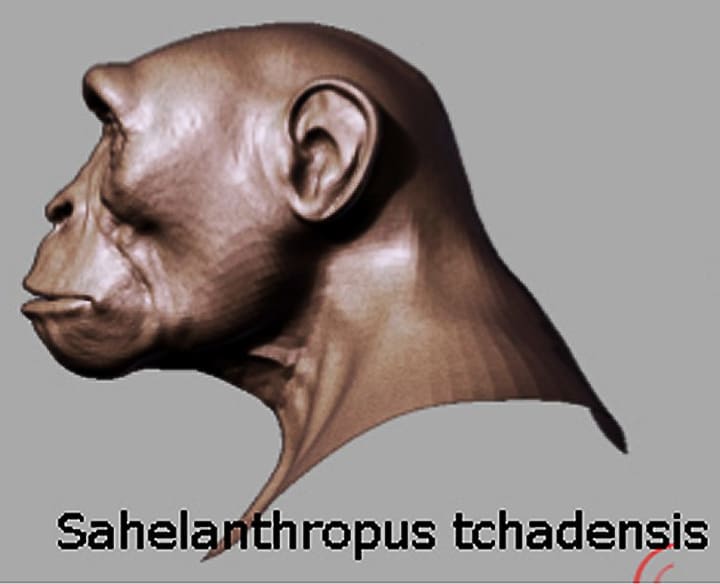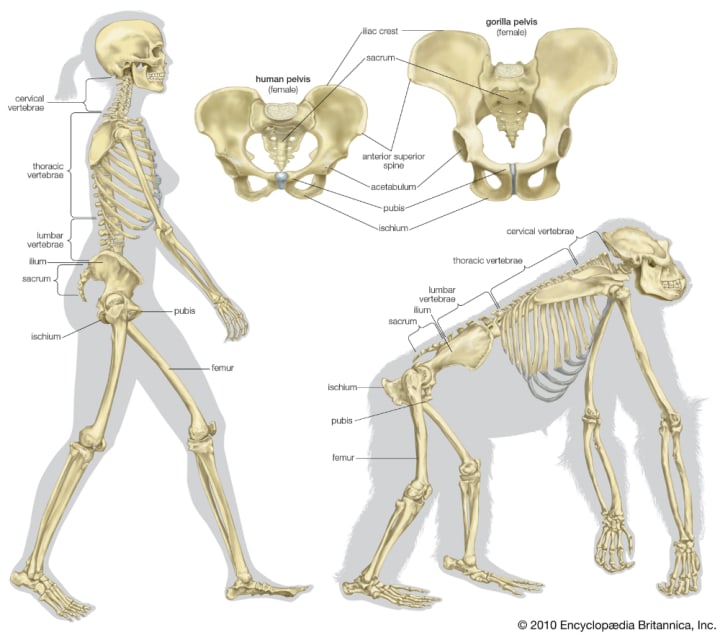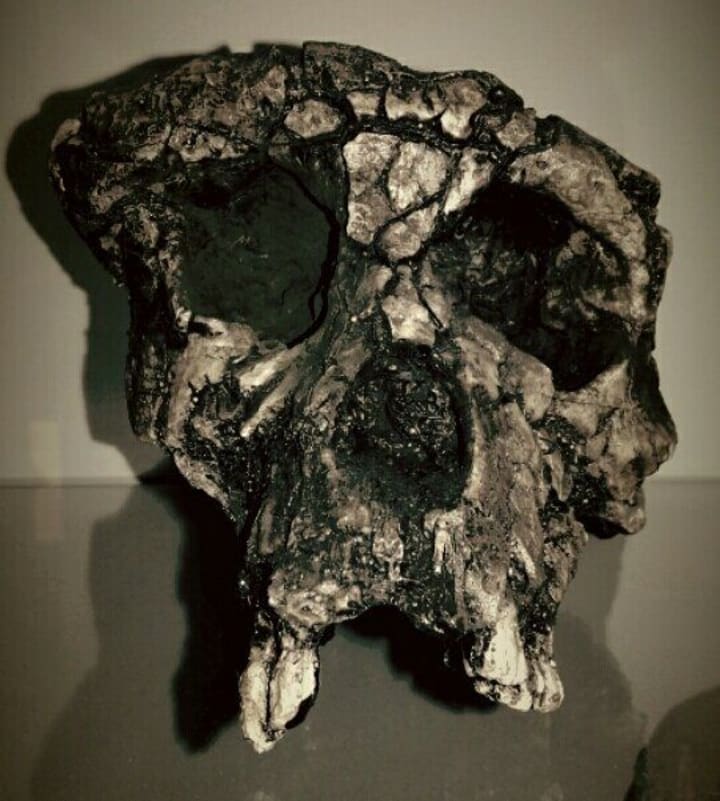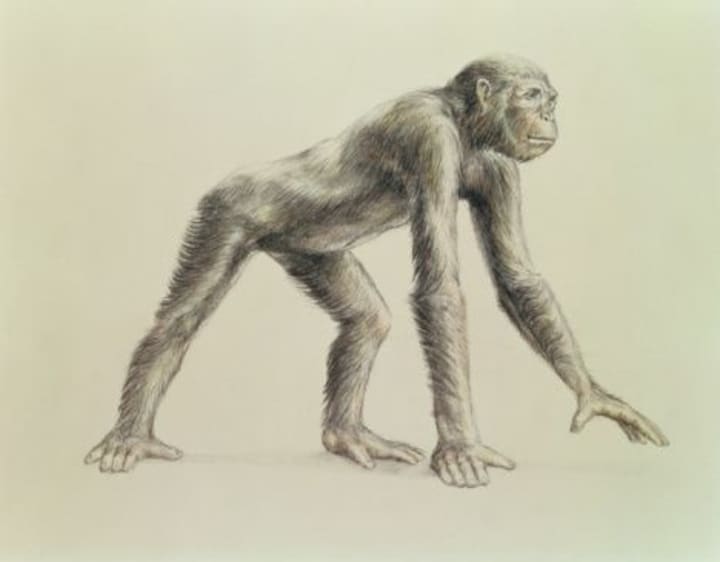The evolution: Sahelanthropus tchadensis
Early human ancestor

Sahelanthropus tchadensis is a fascinating species of early human ancestor that lived around 7 to 6 million years ago. It is considered one of the earliest known species on the human family tree and is an important part of our understanding of human evolution. One of the most significant features of Sahelanthropus tchadensis is the position of the foramen magnum, which is the opening in the skull where the spinal cord exits. In humans, the foramen magnum is positioned underneath the skull, which allows the head to balance on top of the spinal column. In apes, the foramen magnum is positioned towards the back of the skull, which means that the head is more forward-facing. However, there is still some debate among paleontologists about the classification of Sahelanthropus tchadensis as a hominid. Some argue that it may be more closely related to the chimpanzee lineage than to the human lineage, and that the bipedalism seen in this species may have evolved independently from that of later hominids. Despite these debates, the discovery of Sahelanthropus tchadensis has provided important insights into the early evolution of bipedalism and the origins of the human lineage. It has also highlighted the importance of the African continent in the study of human evolution, as many key hominid fossils have been discovered there over the years.

1. Discovery: The first remains of Sahelanthropus tchadensis were discovered in Chad in 2001 by a team of researchers led by Michel Brunet. The fossils consisted of a partial skull, jawbone, and teeth, and were found in the Djurab desert, a remote and inhospitable region of central Africa.

2. Age: The fossils of Sahelanthropus tchadensis were dated to between 6 and 7 million years old, making it one of the earliest known human ancestors.

3. Bipedalism: Sahelanthropus tchadensis was likely bipedal, meaning it walked on two legs. This is indicated by the position of the foramen magnum, the hole in the skull where the spinal cord enters. In Sahelanthropus tchadensis, the foramen magnum is positioned more forward than in chimpanzees, suggesting it was adapted to walking upright.

4. Brain size: Sahelanthropus tchadensis had a small brain, estimated to be about the size of a chimpanzee's. This suggests that early human ancestors were not necessarily smarter than their primate relatives, but that other factors such as tool use and social behavior may have been more important in their evolution.

5. Face shape: The face of Sahelanthropus tchadensis is flatter than that of chimpanzees, with less pronounced brow ridges. This suggests that the species was starting to evolve a more human-like facial structure.

6. Dental features: The teeth of Sahelanthropus tchadensis are also more similar to humans than to chimpanzees, with smaller canines and thicker enamel. This suggests that the species may have started to transition from a primarily plant-based diet to a more omnivorous one.

7. Name: The name Sahelanthropus tchadensis comes from the Sahel region of Africa where the fossils were found and the Greek word "anthropos," meaning "human." The species name "tchadensis" refers to Chad, the country where the fossils were discovered.

8. Controversy: The discovery of Sahelanthropus tchadensis was controversial when it was first announced, with some scientists questioning whether the fossils were actually from a human ancestor or simply a variation of an existing primate species. However, subsequent research has supported the classification of Sahelanthropus tchadensis as an early human ancestor.

9. Importance: Sahelanthropus tchadensis is important because it provides evidence for the early evolution of bipedalism in human ancestors. It also helps to fill in gaps in the fossil record from this time period, which was previously poorly understood.

10. Importance: Sahelanthropus tchadensis is important because it provides evidence for the early evolution of bipedalism in human ancestors. It also helps to fill in gaps in the fossil record from this time period, which was previously poorly understood.
About the Creator
Kobra
"Enter the dark and twisted world of the unknown I lead you through the shadows on a journey into the depths of the unknown."
"Uncovering darkness"
Enjoyed the story? Support the Creator.
Subscribe for free to receive all their stories in your feed. You could also pledge your support or give them a one-off tip, letting them know you appreciate their work.






Comments
There are no comments for this story
Be the first to respond and start the conversation.